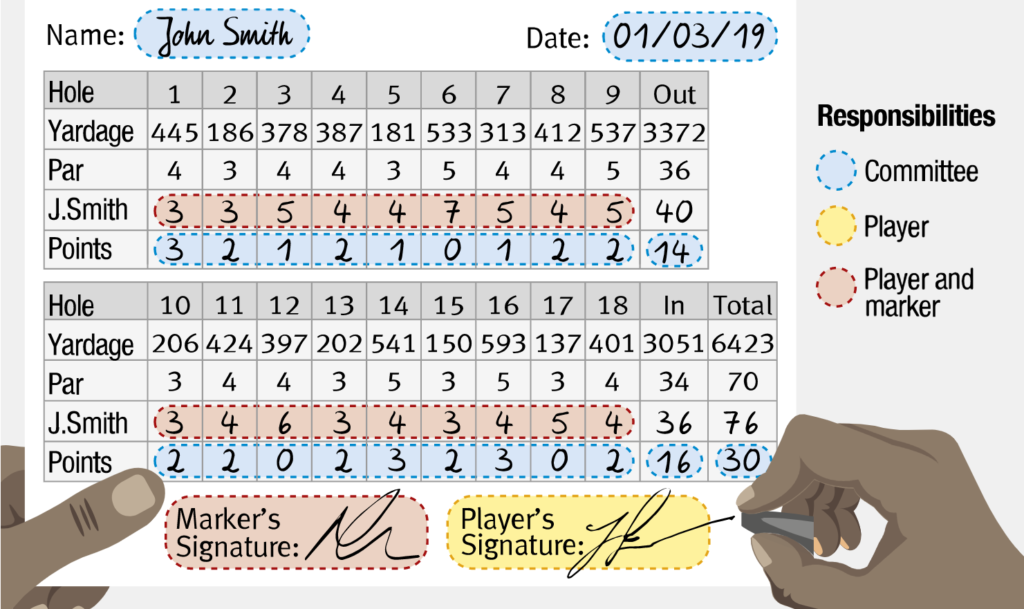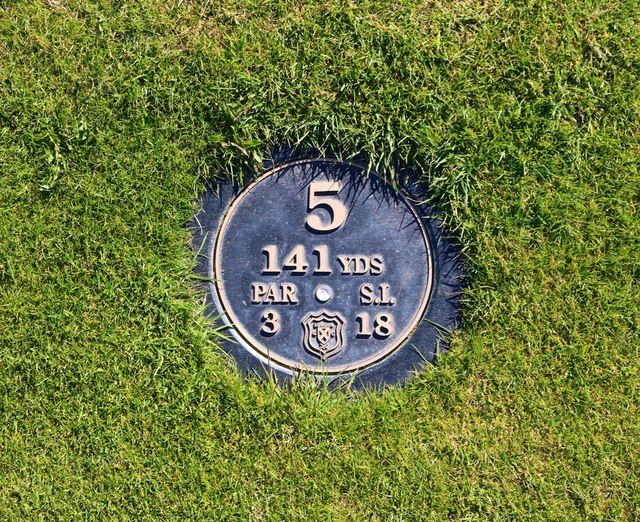
Typically, golfers in the US show up to the course, count every time they hit the ball, and then how many strokes they took in total at the end of the round. This seems logical, and it's the way we see the pros play, but in reality, stroke play is probably the most demanding and stressful way to play a round of golf.
This is especially true for beginners and high handicappers. Stroke play puts pressure on every single shot as one or two bad holes and can ruin an otherwise decent round. If those holes happen at the beginning of the round, the average golfer tends to give up on the rest, making the game less fun. With that in mind, let's take a look at some alternatives to stroke play that you can take out onto the course. Using them every once and a while will likely make golf more enjoyable and might improve the stroke-play score as well.
Stableford Scoring
The Stableford system is the most traditional of the official alternative forms of golf covered under USGA rule 21. In some parts of the world, it is the most common type of scoring for club golf. In Stableford, points are awarded per hole based on the number of strokes in relation to a target score. This target score is usually the set par for the hole plus any handicap strokes. You can see the points awarded in this chart:

For example, an 18 handicap golfer on a Par 4 hole would have a target score of 5 (par of 4 plus their 1 handicap stroke). If they hole out the ball in 5 strokes, they will get two points. Stableford's advantage is that the worst you can do on a hole is zero points, so a few bad holes won't completely ruin the round. This is why Stableford was developed in the first place (named for the inventor, Dr. Frank Barney Gorton Stableford). Another advantage is that if you've hit more than 1 stroke above the target score, you can pick up the ball and move on as you'll get zero points regardless. This is a big help to the pace of play.
USGA Stableford Scorecard Example

Par/Bogey
Another under-utilized official scoring method is Par/Bogey. In this format, you are essentially playing match play, but instead of competing against a different player, you are competing against the course. Like Stableford, in Par/Bogey, each hole will have a target score. For club competitions, the committee will set a target score. In casual play, individuals can decide it for themselves.

The most common ones are the set par (best for highly skilled players) and bogey (one over par and best for mid-handicappers). From there, each hole is either won, lost, or halved. You win the hole for scoring less than the target score, lose the hole for scoring above it, and hitting the target score means the hole is halved (essentially tied). At the end of the round, count the number of holes won minus holes lost to see your total result.
Playing Par/Bogey is a great way to improve your mental game and strategy. It forces you to treat each hole as its own competition instead of an overall result. Golf strategy systems like DECADE teach that avoiding the big numbers is the key to scoring well. For the 18 handicap golfer, getting more wins than losses over the round with a bogey target score on each hole means they avoided double bogeys on most holes. In traditional stroke play, a couple of early doubles might have caused the player to give up, but with Par/Bogey, they still have something to play for and keep trying their best. For beginners, the target score might be two over par or more, but each hole gives a new opportunity to "win."
Eventually, this type of mindset will likely carry-over into improved stroke play scores as well.
Maximum Score
Average golfers everywhere could commiserate with Tiger Woods at a recent Masters when he managed to card a 10 on the Par 3 12th hole. Of course, most of us wouldn't be able to turn around and birdie five of the next six holes, and I'm sure a few golfers out there would have just walked off the course at that point.
The fact of the matter is that most golfers really shouldn't score 10 strokes on a single hole during a non-competition round, even if they're reporting scores for an official handicap. Under the new World Handicap System, all rounds posted for handicap are played under maximum score stroke play. In these rounds, the highest possible score for a hole is a net double bogey or two strokes more than par plus any handicap strokes. Here is a quick video explanation from the WHS.
While Maximum Score is more of a modification to stroke play than a different system, using it has some of the same benefits as the other formats discussed. First, since there is a cap on strokes for each hole, golfers will always have the chance to recover. Second, in non-tournament rounds, it's entirely within the rules to pick up the ball and head to the next hole when the maximum is reached, improving pace. In this case, the player will write down that maximum stroke number on the scorecard, and it is still reportable for their handicap. Another possible advantage is mental as, after picking up the ball, there will be an opportunity to reset your brain before the next hole.
Everyone will have days where golf is a frustrating game. However, by expanding your play beyond traditional stroke play, you can still keep a round fun and engaging. Try them next time you're out on the course. Have any other types of formats you play yourself or with a group? Let us know over on the Practical Golf forum.
We care about the protection of your data Read our Privacy Policy